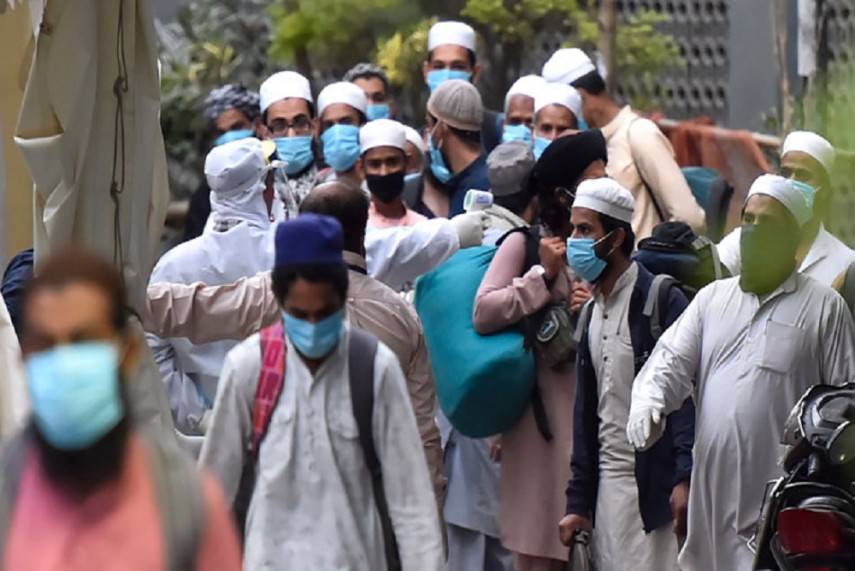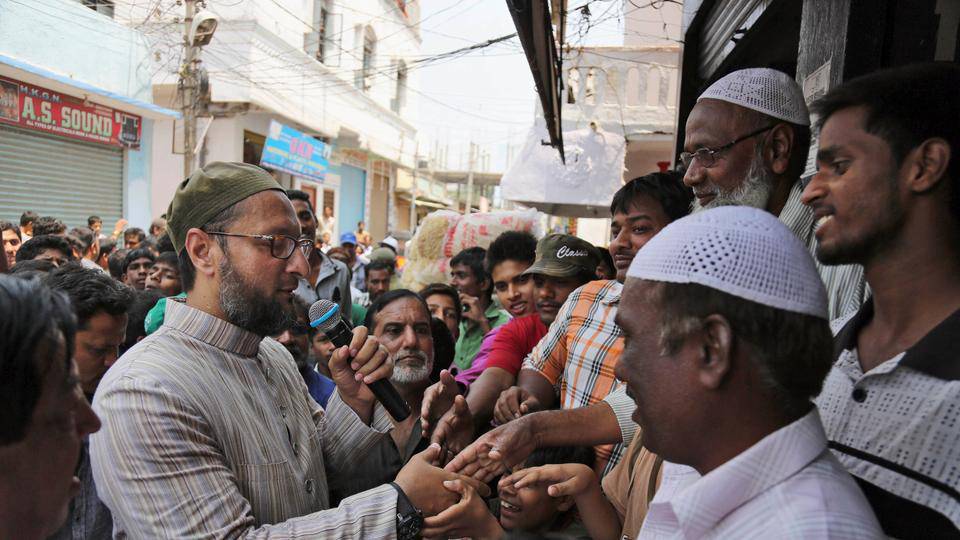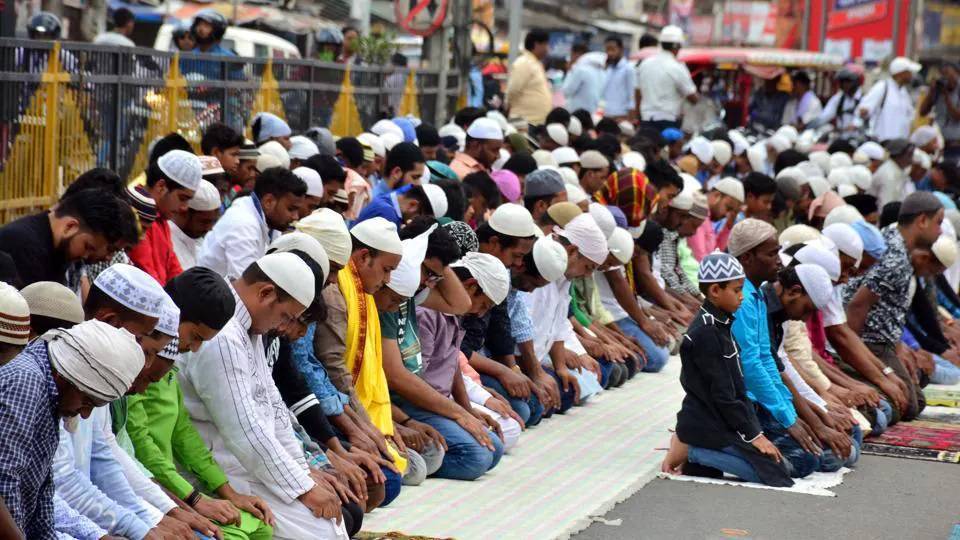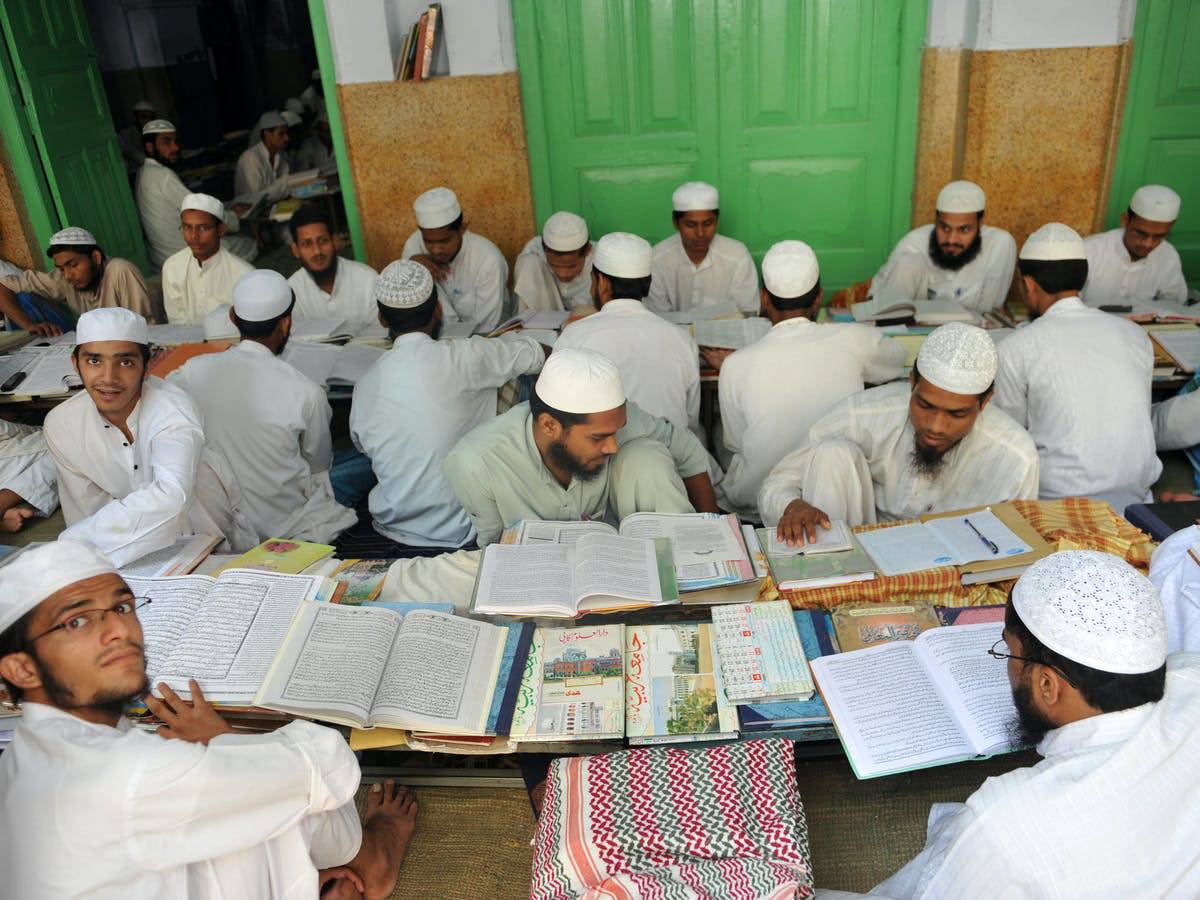MORE COVERAGE
Twitter Coverage
Satyaagrah
Written on
Satyaagrah
Written on
Satyaagrah
Written on
Satyaagrah
Written on
Satyaagrah
Written on
JOIN SATYAAGRAH SOCIAL MEDIA
Islamic revivalist movements in Bharat and Deoband’s link to Taliban

Various scholars have argued that Islamist movements emerged in reaction to the failure of state-led modernization projects and to general socioeconomic problems such as youth unemployment and poverty. Yet Islamist movements are not limited to poor countries or to disadvantaged, marginalized groups. In fact, members of these movements are generally highly educated, predominantly in secular fields, as a result of state-led modernization projects. In particular, mainstream Islamist parties are typically led by young men and women who are successful professionals with college or university degrees.
Muslim revivalism in Bharat
Bharat has experienced several Sunni Muslim revivalist movements over the last five centuries, and these intensified as a response to the decline of Mughal rule and the arrival of the British. According to Pakistani academic and former ambassador Hussain Haqqani’s documentation on the history of these movements, the rationale can be best explained in the words of revivalist Syed Abul Ala Maududi:
Islamic Revival is neither striking compromises with un-Islam, nor preparing new blends of Islam and un-Islam, but it is cleansing Islam of all the un-Godly elements and presenting it and making it flourish more or less in its original pure form. Considered from this viewpoint, a mujaddid [Islamic revivalist] is a most uncompromising person with regard to un-Islam and one least tolerant as to the presence of even a tinge of un-Islam in the Islamic system.
- Most subcontinental Muslims recognize Shaykh Ahmad of Sirhind (1563-1624) aka Ahmad Sirhindi as the subcontinent’s first Islamic revivalist. He questioned emperor Akbar’s efforts to create a formal Indian religion (Deene-Ilahi, or “religion of God”) and insisted instead on strict adherence to Sharia (Islamic law).
- Shah Waliullah of Delhi (1703-1753 or 1762 by some accounts) combined religious scholarship with an active role in political matters. He wrote to the Afghan chieftain Ahmed Shah Abdali (1722-1772) asking him to attack the Marathas and save the Mughal empire from losing territory. He emphasized the importance of Muslim political power and ascribed Muslim decline to the rise of secular monarchy at the expense of the religiously guided caliphate. As this well-referenced article shows, Waliullah was a contemporary of Muhammad ibn Abd al-Wahhab (1703-1792). Waliullah went to Mecca on Hajj (Muslim pilgrimage) in 1730 and spent many months studying at Medina, and this period likely overlapped with Wahhab’s studies in Medina. One of the prominent teachers in Medina at that time was an Indian immigrant Muhammad Hayat from Sindh, who taught Wahhab and probably Waliullah too! Hayat in turn descended from the same school of thought as Sirhindi.

- The Mujahidin Movement initiated by Sayyid Ahmed Bareili (aka Syed Ahmad Barelvi, 1786-1831) in northwest India. The founder Sayyid Ahmed Bareili was influenced by Wahhabi teachings during a pilgrimage to Mecca and returned to Bharat with the belief that there was a need to purify Islam as it was practiced in Bharat and to re-establish Muslim power.
- Haji Shariatullah (1781-1840) initiated a movement to bring the Muslims of Bengal back to the ‘true path of Islam’. Like Sayyid Ahmed he too had been influenced by Wahhabi teachings during his pilgrimage to Mecca. His followers were called the “Faraizis” which derives from the word farz, meaning obligation.
- Founded in 1866/67 by Maulana Muhammad Qasim Nanautawi, the Darul Uloom (Center of Learning) at Deoband (a town in Uttar Pradesh, Bharat) spearheaded a traditionalist reform movement among South Asia’s Muslims, after the last Mughal emperor was exiled by the British following the 1857 war of Independence. The Deobandis attribute the decline of Islamic societies to Muslims being seduced by an amoral and materialist Western culture, and from assorted Hindu practices believed to have crept into and corrupted the Islamic religion. The basic goal of the Deoband School is ‘purifying Islam of such un-Islamic beliefs and practices’.
- An offshoot of Darul Uloom, the Nadwatul Ulama (Congress of Ulama) was set up in 1893 at Kanpur. This institution, which moved to Lucknow in 1898 sought to create a corps of ulama who would be conversant with conditions and events occurring around the world.
- The Tablighi Jamaat that originated in the Mewat region of Bharat in 1926/27 to urge Muslims to return to a ‘pure form’ of Sunni Islam is another offshoot of the Darul Uloom of Deoband.
- The Jamaat-e-Islami, founded in 1941 by Abu Ala Maududi, divided itself into three organizations after partition, one each for Bharat, Pakistan, and Kashmir. Maududi, born in Aurangabad in the then Hyderabad-Deccan princely state, moved to Pakistan in 1947, leaving Jamaat-e-Islami India to his followers. The group considered itself the “vanguard of the Islamic Revolution” in South Asia. Maududi’s main ideas focused on the notion of a single law (i.e., Sharia), divine sovereignty and the belief that the struggle between Islam and un-Islam would lead to an Islamic revolution that would bring about the creation of an Islamic state. Maududi insisted it was necessary to Islamize society before creating the Islamic state. The Jamaat-e-Islami of India, named “Jamaat-e-Islami Hind,” was organized in 1948, soon after partition, at Allahabad with Abul Lais Nadvi as its head. In 1960 its headquarters were moved to Delhi. A radical offshoot of this movement is the Students Islamic Movement of India (SIMI), which was banned by Bharat’s government in 2001 for having links with terrorism.
- Although the 19th-century Bareili and Faraizi movements, originally inspired by the Wahhabis of the Arabian peninsula fizzled out against the might of the British Empire, some Indian Muslims adopted their puritanical doctrine. The Wahhabis of India describe themselves as “Ahle Hadith” or “Followers of Hadith.” The most prominent Ahle Hadith or Wahhabi-jihadi group operating in India is the Lashkar-e-Taiba (“Army of the Pure.”). It is the armed wing of the Pakistan-based religious organization Markaz Dawa-wal-Irshad (Center for the Call to Righteousness,) which was set up in 1989 by Hazrat Muhammad Sayeed (and subsequently renamed Jamaat-ud-Dawa (Party for the Call to Righteousness). The group was renamed Jamaat-ud-Dawa in Pakistan to circumvent a U.S.-inspired ban on the group as a terrorist organization.
- The Muslim United Liberation Tigers of Assam (MULTA) was reportedly founded in 1996 and, along with the Muslim United Liberation Front of Assam (MULFA), is part of the All Muslim United Liberation Forum of Assam (AMULFA). These groups have engaged in random acts of violence in the northeast region of Bharat, claiming that their ultimate aim is to set up a “greater independent Islamistan” for the Muslims of Assam.
All Islamic movements are ultimately driven by the Quran and Hadith. But from the above, we can see that Muslim revivalism to cleanse Islam of ‘corrupt’ (Hindu) influences in the Bharatiya sub-continent started during Akbar’s rule, and gained strength from their exchanges with the Saudi Wahhabi ideology. This is something the Muslim and liberal intelligentsia which waxes eloquent about ‘syncretic culture’ and Ganga-Jamuni tehzeeb will not tell you.
 |
Wahhabi school of Islam
This movement was founded by Muhammad ibn Abd al-Wahhab in the 18th century in Najd, Central Arabia, to be adopted by the Saudi ruling dynasty in 1744 and since that time, has been the brand of Islam practised in Saudi Arabia. While outsiders call then Wahhabis, its adherents prefer to call themselves Salafis which means pious forebears (first three generations of Muslims).
They reject all acts that they consider polytheism (shirk) and this includes visiting tombs or venerating saints. They advocate following only the original teachings in the Q’uran and Sunnah and recommend literal interpretation of these texts. Other sources of doctrine are considered ‘innovations’ (bid’ah) and not true to the faith.
Regarding the influence of Wahhabi ideology in India, Uday Mahurkar mentions the Taqwiyat-ul-Ima:
…a book being taught in all Wahhabi madarsahs in the country for over 150 years now, which preaches hatred…..The book was written in 1820s by Delhi-based Wahhabi Maulvi, Shah Ismail, who was a disciple of Syed Ahmed Barelvi.
The Taliban
The word ‘Taliban’ comes from Pashto or Dari, i.e originally from Persian language and means ‘students’. After the Deoband seminary was established in UP, the Deobandi tradition soon became the most popular school of Islamic thought among the Pashtuns (aka Pathans/Pakhtoons), an ethnic group living in an area on either side of the Afghanistan-Pakistan border. After Bharat was partitioned in 1947, many prominent Deobandi scholars migrated to Pakistan, setting up a large number of madrassas.
After the Soviet invasion of Afghanistan in 1979, American spy agency CIA started covertly funneling arms and money through Pakistan’s ISI to orchestrate a resistance movement consisting of religious fighters, the mujahedeen. Most of these fighters were drawn from Deobandi madrassas.
Money also started pouring in to the Deobandi madrassas from Saudi Arabia, which by then was working assiduously to promote its Wahhabi doctrine all across the Islamic world. So there was a fresh injection of Wahhabism in these Deobandi madrassas in Af-Pak region since the 1980s.
After forcing the Russians to withdraw, these Pakistan-backed religious fighters formed the group today known as Taliban. After a few years of civil war in the 1990s, they first took control of Afghanistan in 1996 before being driven back to the Af-Pak border region by America’s 2001 invasion, and now are back at the helm due to America’s hasty withdrawal.
 |
Taliban – Deobandi or Wahhabi?
Now, lets try to address the question – Is Taliban inspired by Deobandis or Wahhabis? Is the Deoband a ‘liberal’ form of Islam and Wahhabism an ‘extreme’ form?
We have already seen that the Muslim revivalist movements in Bharat predate the rise of Wahhabism in Saudi Arabi. One of the main figures Shah Waliullah was a contemporary of Muhammad Wahhab and they likely studied from the same teachers in Medina. Later figures like Syed Ahmed Barelvi and Haji Shariatullah were inspired by Wahhabi teaching during pilgrimage to Mecca. This is the line of teachers under whose influence the Deoband seminary was set up in 1866/67. So the roots of both the Deobandi and Wahhabi schools are the same. As we have shown previously, one of Wahhab’s key teachers was an Indian immigrant to Medina, so it can even be said that Wahhab was ‘radicalized’ by an Indian Muslim!
Some academics like American Prof. Brannon Ingram claim that Deobandis are more ‘accepting’ of Sufism – a form of Islam which involves mysticism, devotional practices like asceticism, singing & ecstatic dancing/whirling, and veneration of saints & their mausoleums (dargahs).
But when you see more detailed expositions by these same academics, you find that Deobandis have been vociferous critics of Sufi practises deemed bid’ah or shirk like celebrating Sufi saint’s death anniversary (‘urs), and appropriated Sufi concepts to attract emergent Muslim middle-class professionals in the late 19th century. They mobilized the classical Sufi concept of companionship (suhbat) between master and disciple to reassert the importance of the person-to-person transmission of knowledge and affect, and asserted that Sufism is fundamentally about ethics. So Deobandis used Sufism only to further their own puritanical, revivalist goals.
In 2016, lashing out at the ‘World Sufi Conference’ held in New Delhi, Darul Uloom Deoband principal and head of Jamiat Ulema-e-Hind, Maulana Syed Arshad Madani said that Sufism had no in Islam. “Sufism is no sect of Islam. It is not found in the Quran or Hadith…So what is Sufism in itself? This is a thing for those who don’t know Quran and Hadith,” he said.
Moreover, the idea that Sufism is a mild/syncretic form of Islam that respects Hindu Dharma is false. Sufism rejects polytheism and murti-puja just as virulently as other schools of Islam. It played a key role in the Islamization of Bharat, often in the wake of bloodshed, temple destruction and intolerance.
One difference between Wahhabis and Deobandis is that the former follow the Hanbali school of Sunni Islamic jurisprudence while the latter follow the Hanafi school. Mailiki and Shafi’i make up the other two schools of jurisprudence.
Like all other schools of Sunni Islam, the Hanbali school holds that the two primary sources of Islamic law are the Quran and the Hadiths. The Hanbali school, unlike Hanafi school, rejected that a source of Islamic law can be a jurist’s personal discretionary opinion or consensus of later generation Muslims, as this can lead to abuse of Islamic doctrines. The Hanbali school also rejects taqlid (blind adherence to scholarly opinions) and encourages the practice of Ijtihad (independent reasoning) through the study of Quran and Hadith.
The concept of taqlid is strongly supported by Deobandis (Hanafis) while most from the Wahhabi school (Hanbalis) oppose the idea of blindly following a scholar for jurisprudence. However, as Muslims themselves say, the differences between these schools lie not in the fundamentals of faith, but in finer judgments and jurisprudence.
A statement like “The Hanbali school (is) Islam’s most orthodox….Hanafi school (is) known for being the most liberal and the most focused on reason and analogy”, as made in this otherwise informative paper by American think-tank CFR, can be misleading if taken at face value. Such comparisons are relative to each other and only in theory. In practise, what Hanbalis and Hanafis do may not be very different. Especially when it comes to dealing with non-Muslims.
 |
Conclusion
Deobandis and Wahhabis have shared roots that go back centuries. Deobandis might have adopted some different methods to grow their movement and establish their authority in the Bharatiya subcontinent, but the fundamentals of both schools remained the same.
Arguments that the Taliban’s version of Islam ‘diverged’ from the original Deobandi movement in the later years of the 20th century due to Wahhabi influence, are mistaken at best and dishonest at worst. Taliban is a manifestation of the idea originally seeded by Deoband, nurtured by the jihadi state of Pakistan in the Af-Pak region, and nourished with American and Saudi resources.
Darul Uloom Deoband in Bharat might try to distance itself from the Taliban to avoid negative publicity, but its pride in its protégé shines through when Maulana Madini compares Taliban to Bharat’s freedom fighters.
Many myths have been perpetuated about the role played by Deobandis, Barelvis and other Muslim ulema in that freedom struggle. A reading of historian Venkat Dhulipala’s book ‘Creating a New Medina: State Power, Islam, and the Quest for Pakistan in Late Colonial North India’ will clear many of these misconceptions. The multiple voices that have recently arisen in support of Taliban within Bharat are a clear sign that Deobandis and other Indian Muslim fundamentalists are merely biding their time.
References:
hindupost.in - By Guest Author
 Support Us
Support Us
Satyagraha was born from the heart of our land, with an undying aim to unveil the true essence of Bharat. It seeks to illuminate the hidden tales of our valiant freedom fighters and the rich chronicles that haven't yet sung their complete melody in the mainstream.
While platforms like NDTV and 'The Wire' effortlessly garner funds under the banner of safeguarding democracy, we at Satyagraha walk a different path. Our strength and resonance come from you. In this journey to weave a stronger Bharat, every little contribution amplifies our voice. Let's come together, contribute as you can, and champion the true spirit of our nation.
 |  |  |
| ICICI Bank of Satyaagrah | Razorpay Bank of Satyaagrah | PayPal Bank of Satyaagrah - For International Payments |
If all above doesn't work, then try the LINK below:
Please share the article on other platforms
DISCLAIMER: The author is solely responsible for the views expressed in this article. The author carries the responsibility for citing and/or licensing of images utilized within the text. The website also frequently uses non-commercial images for representational purposes only in line with the article. We are not responsible for the authenticity of such images. If some images have a copyright issue, we request the person/entity to contact us at This email address is being protected from spambots. You need JavaScript enabled to view it. and we will take the necessary actions to resolve the issue.
Related Articles
- Mohammedan needs to 'take back Babri Masjid', ISIS magazine states that Hindus are ‘filthy urine drinkers’ who learned civilized living from Muslims
- Devkinandan Thakur's statement is a slap in the face of the Islamist hoodlum from Hyderabad - “Many more Yogis and Modis standing in line…”
- The true face of Saba Naqvi: How the ‘secular journalist’ supported Muslims acts of violence and fanaticism on Ram Sevaks in Sabarmati Express burning leading to gruesome killing of some 59 innocent people, including 25 women and 15 children
- 'Hinduon se Azadi', 'La ilaha illallah' and 'Ghazwa-e-Hind' slogans by Muslims was secular leading to Genocide of Kashmiri Pandit: Then and now, from Azadi slogans to Hindu hate, the nature of Jihad and its apologists remain unchanged
- To be on the wrong side of history is a choice – How 21st-century invaders are capturing Chhatrapati Shivaji’s forts the way even Mughals didn’t and attempting to reclaim an invader identity unapologetically
- Tales of Fraud, funding, forced religious conversion and insulting Hindu gods and goddesses after brainwashing: How tribals were converted to Islam in Gujrat - “Aapka paigam London pahucha diya hai, achha kaam ho raha hai"
- ‘Casteless Hindu’ is Not a Paradox. It is The keystone of ‘Ghar Wapsi’ and Hindutva
- Just a few months before the raging Hijab controversy, Muslim residents of Udupi had boycotted local fishermen for participating in a mega Padayatra to protest against illegal theft and slaughter of cows
- 'Worshipping Sun is a complete No-No, it has been birthed by Allah': MLC Gulam Rasool Balyawi from JDU opposes Surya Namaskar on January 12
- In another incident of ‘Land Jihad' how property in Shiv Shakti society of Mora, Surat, came in possession of Waqf Board: Gandhinagar based trust claims that Board is illegally taking over properties by misusing the Waqf Act, 1995
- 16 Jan to 22 Jan - 2022 - Continuing attacks on Hindus: bulletin roundup of persecution, discrimination, and hate crimes against Hindus
- Qatar-based Sheikh Eid Bin Mohammad Al Thani Charitable Association has been funding millions of dollars to organizations associated with the Wahhabi school of thought since 2008-2009: Earlier accused by the US also for assisting Al Qaeda
- Girl students wear saffron shawls, chant Jai Shri Ram to protest against hijab in Karnataka: What Ambedkar meant about Women in Islamic Veil by saying, ‘One of the most hideous sights one can witness in India’
- How Chhatrapati Shivaji Maharaj was establishing Hindu Samrajya by concluding centuries of Islamic oppression - Historian GB Mehandale destroys secular propaganda against Hindu Samrajya Divas
- Why authorities ignoring conspiracy of Sexual objectification of Hindu women: #Hslut4Mstud Users on Reddit, Twitter and Tumblr are targeting Hindu women with pornographic content ‘for Muslim studs’




























